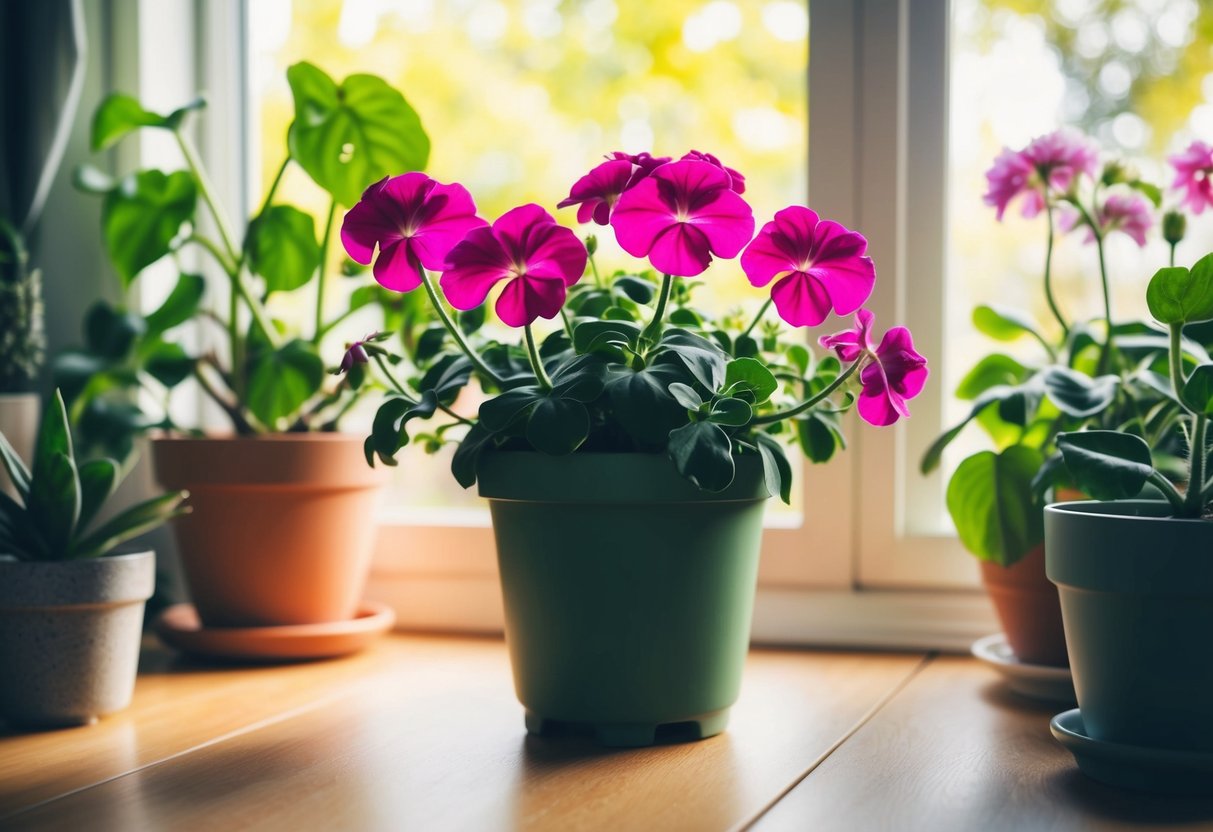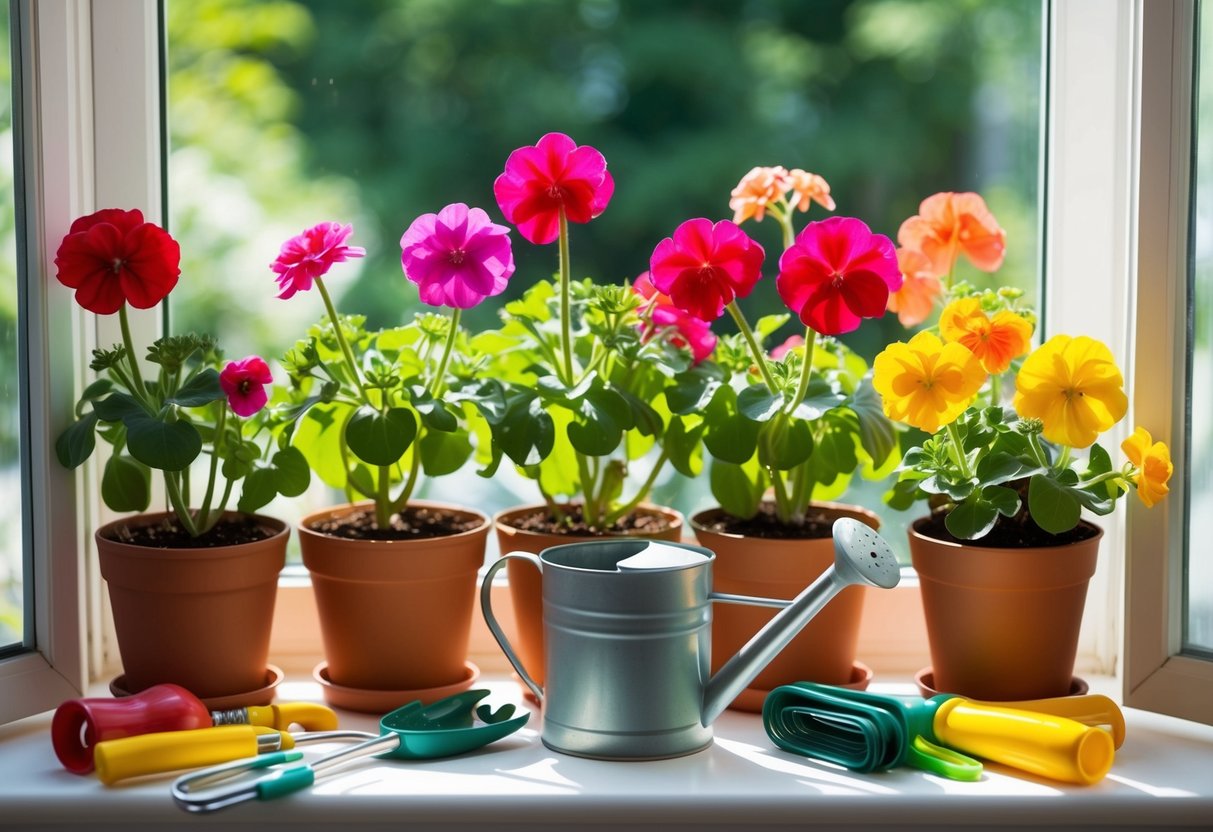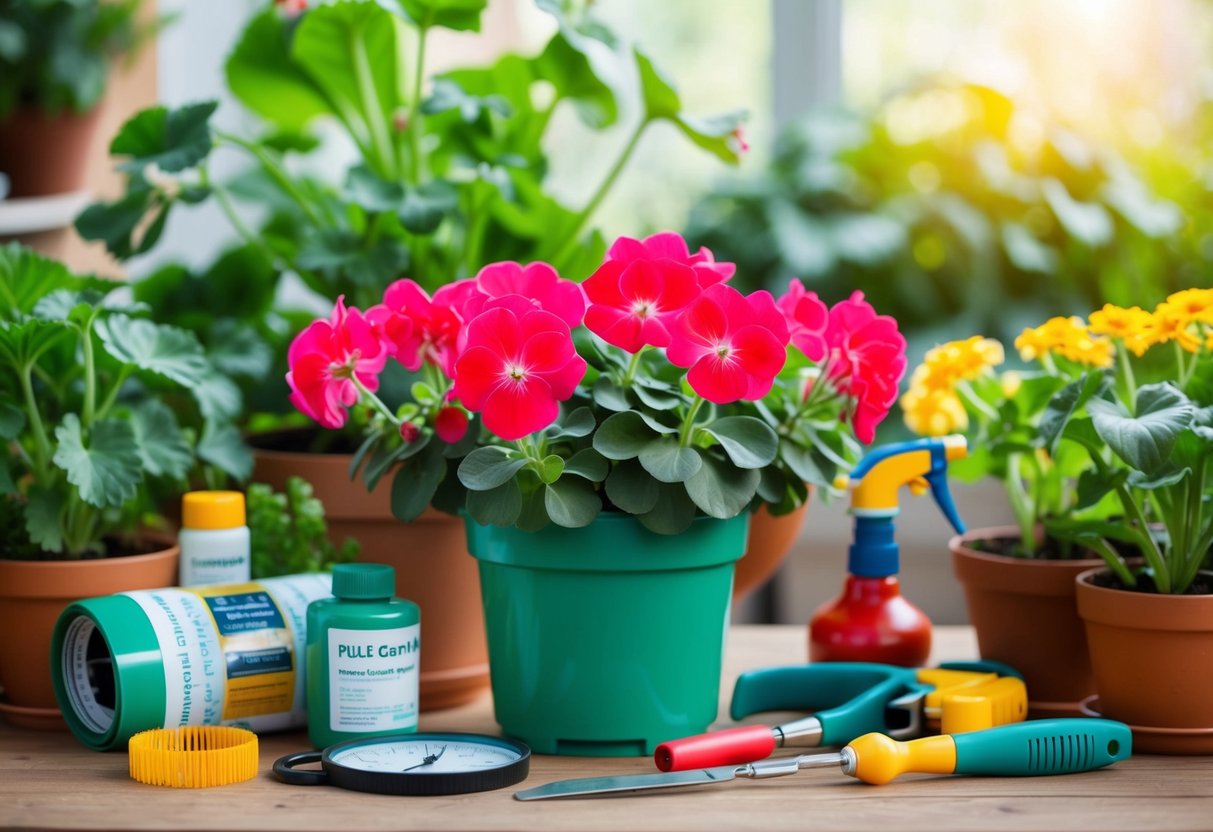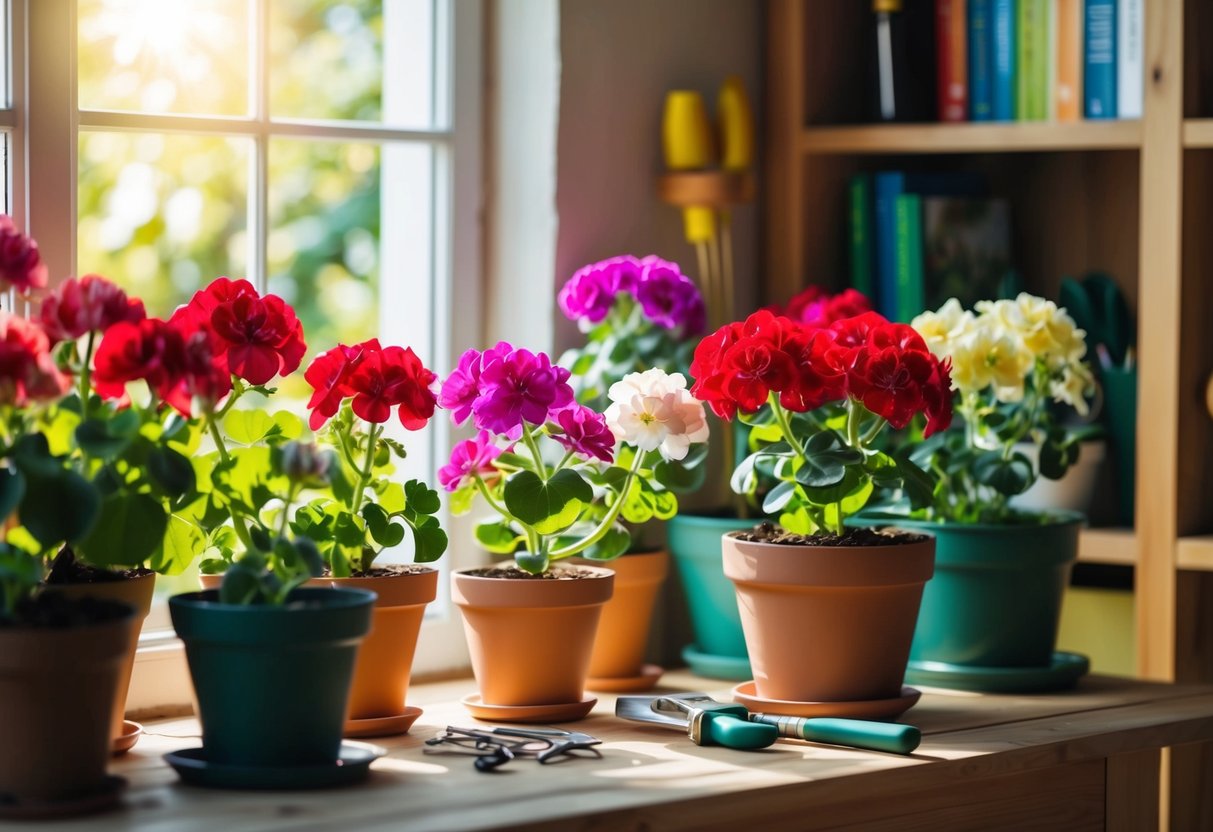Will Geraniums Bloom All Year Inside? Indoor Care Tips
If you love indoor plants and want to keep your space vibrant, geraniums might be the perfect choice for you. These flowering plants are known for their bright blooms and ability to thrive in indoor settings. Geraniums can bloom all year inside if you care for them properly.

To help your geraniums flourish, you’ll want to place them in a spot with enough sunlight. A south or west-facing window is ideal for these plants, as they need around six hours of light each day. They also adjust well to typical room temperatures, adding a lovely touch to your indoor garden without much hassle.
Proper water and temperature management are key to keeping your geraniums healthy. Ensure they are watered appropriately based on their growing conditions and maintain temperatures between 65°F to 70°F during the day for optimal growth.
With the right care, you can enjoy bright and lively blooms that make your space cheerful all year round.
Getting Started with Indoor Geraniums

Starting with indoor geraniums involves choosing a variety that suits your home environment and deciding on the right pot size. Each variety has its unique charm, and pot size plays a key role in plant health.
Choosing the Right Variety
Choosing the right geranium variety is exciting because there are so many options. Zonal geraniums (Pelargonium x hortorum) are popular and known for their upright growth and wide range of flower colors. Ivy-leafed geraniums (Pelargonium peltatum) have trailing stems, making them perfect for hanging baskets or high shelves. Martha Washington geraniums (Pelargonium x domesticum) are admired for their bold blooms and striking colors.
Consider the amount of light in your home. Some varieties, like zonal geraniums, thrive in bright light, while others may prefer indirect light. Explore the colors that each variety offers. This way you can complement your indoor decor while adding a vibrant touch to your living space.
Selecting the Perfect Pot Size
Selecting the right pot size is crucial for your geranium’s health. The pot should be large enough to support the plant but not too spacious. Begin with a pot that is around 6 to 8 inches in diameter for a young plant. Geranium roots prefer to be somewhat crowded, as this can encourage better blooming.
If your geranium grows too big, consider repotting it into a slightly larger pot. Ensure the pot has drainage holes to prevent waterlogging, which can harm the roots.
Combine the right pot size with quality potting soil that drains well while retaining some moisture. A mix designed for indoor plants often works best for geraniums. Proper drainage and good soil will ensure that your plant receives the nutrients it needs.
The Essentials of Geranium Care

Caring for geraniums indoors involves providing the right amount of sunlight, watering correctly, and choosing the right soil and fertilizers. These key aspects will help your geraniums thrive throughout the year.
Sunlight and Location Requirements
Geraniums love sunlight. To keep them happy, place them in a spot that gets at least six hours of direct sunlight daily. South or west-facing windows are usually the best. If natural light is limited, you might want to use grow lights to supplement.
Temperature is another factor. Keep your geraniums in areas where temperatures stay between 65-70°F during the day. Night temperatures should be around 55°F to encourage healthy growth.
Watering Do’s and Don’ts
When it comes to watering, balance is important. Water your geraniums when the top inch of the soil feels dry.
It’s crucial to avoid overwatering, as this can lead to root rot. Underwatering can also stress the plant and slow down its growth.
Make sure the pot has drainage holes. This helps excess water escape, which is key in preventing overwatering. If you notice yellow leaves, it might be a sign that you’re giving too much water.
Understanding Soil and Fertilizing Needs
A well-draining soilless potting mix is ideal for geraniums. This type of mix prevents water from sitting in the roots, which helps avoid rot. If you’re using regular soil, ensure it’s not too heavy. Add perlite or sand to improve drainage.
Fertilizing during the growing season will help your geraniums bloom. A balanced, water-soluble fertilizer every four to six weeks should keep your plants healthy. Always dilute the fertilizer to avoid burning the roots.
Too much fertilizer can also lead to lush foliage but fewer flowers, so keep it balanced.
Preventing and Managing Pests and Diseases

Keeping your indoor geraniums healthy requires attention to potential pests and diseases. It’s crucial to identify and manage common insect pests and take preventive measures against fungal diseases.
Common Insect Pests
Geraniums are prone to a range of insect pests. Aphids and whiteflies are frequent visitors. You’ll notice these tiny insects on the underside of leaves. Regularly check your plants, and if you find these pests, use insecticidal soap or neem oil for treatment.
Mealybugs and spider mites can also be problematic. Mealybugs appear as white, cotton-like masses, while spider mites leave webbing and small yellow spots on leaves. Wipe the leaves with a damp cloth to remove these pests, and apply insecticidal treatments as needed.
For caterpillars, handpicking is effective. Additionally, ensure that your geraniums have good air circulation, as this deters many pests. Keep an eye out for early signs of infestation to act promptly.
Fungal Diseases and Prevention
Fungal diseases such as gray mold and botrytis blossom blight can affect geraniums, especially in humid conditions. Ensure proper air circulation by placing your plants in areas with good airflow, and avoid overhead watering to keep the leaves dry.
If you notice any gray mold, remove the affected parts immediately. Aim to water your plants in the morning so the soil dries by night. This reduces the chances of fungal growth.
Using a fungicide may be necessary for severe cases. Choose a product that is safe for indoor plants, and always follow the instructions for application. Keeping your plants clean and healthy is the best defense against fungal diseases.
Maintenance and Annual Care

To keep your indoor geraniums healthy and blooming, focus on regular pruning and deadheading to manage growth and encourage flowers. Planning for overwintering and repotting ensures your plants stay vibrant year-round.
Pruning and Deadheading
Regular pruning is essential to avoid leggy growth in your geraniums. Trim back about one-third of the plant at the start of the growing season. This promotes fuller, bushier growth. Always use clean, sharp scissors to prevent damage or disease spread.
Deadheading, or removing spent flowers, keeps your geraniums looking tidy and encourages new blooms. Pinch off the old flowers close to the stem. This simple step can improve your plant’s overall appearance and health.
Overwintering and Repotting Strategies
Geraniums are not frost-hardy, so overwintering them indoors is crucial if you live in colder hardiness zones. In the fall, bring your plants inside to protect them from freezing temperatures. Reduce watering and allow them to rest during the winter months.
If your geraniums outgrow their pots, consider repotting in the spring. Choose a pot with drainage holes to prevent root rot. Refresh the soil to provide nutrients for the upcoming growing season. This keeps your plants healthy and ready to bloom again.
Tips for Encouraging Year-Round Blooms

To have geraniums blooming all year indoors, start with the right temperature. Keep your flowering plant in a room where temperatures range from 45°F to 80°F. These conditions are perfect for comforting your houseplants, encouraging them to keep on blooming throughout the seasons.
Light requirements are also crucial. Make sure your potted geraniums get plenty of sunlight. They need around 4-6 hours of direct sunlight daily. If your windows don’t provide enough light, consider using an indoor gardening light to mimic sunlight.
When you grow geraniums indoors, ensure they have the right soil and nutrients. Use well-draining soil in your pots. Overwatering can harm them, so let the soil dry out a bit between waterings.
You can boost their growth by adding a balanced fertilizer every few weeks to provide essential nutrients.
Another helpful tip for growing geraniums indoors is proper pruning. Cutting back leggy growth facilitates better blooms. Trim the stems to promote bushier growth and remove any dead flowers regularly to encourage new buds.







